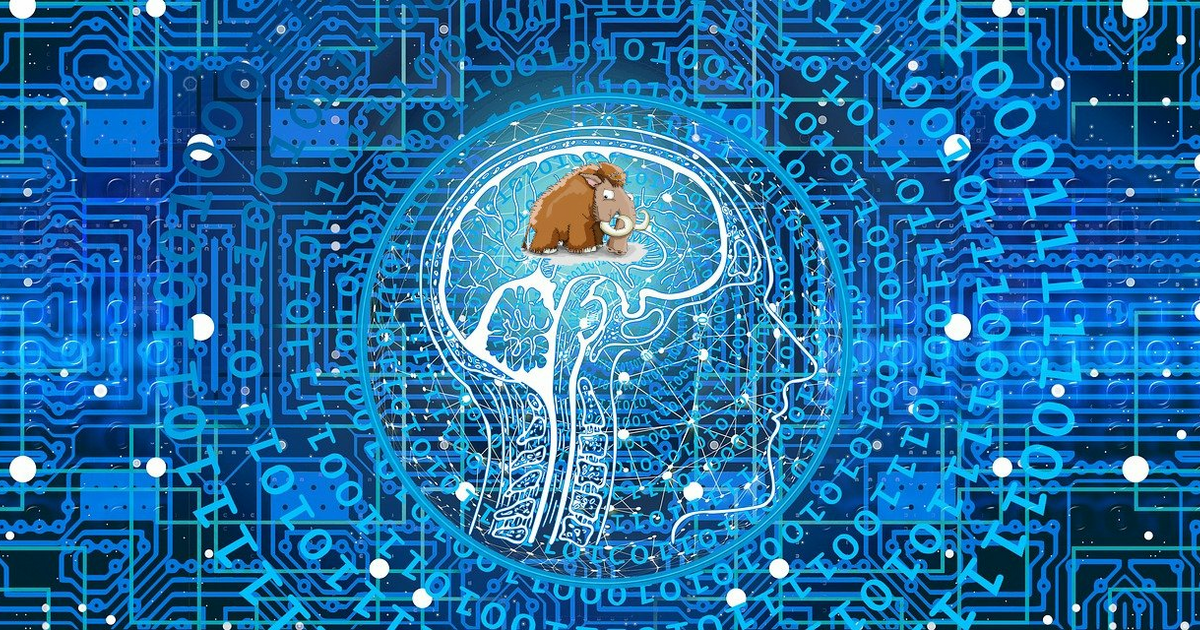El Duvelle Neuro<p>If you want to study <a href="https://neuromatch.social/tags/HippocampalReplay" class="mention hashtag" rel="nofollow noopener" target="_blank">#<span>HippocampalReplay</span></a>... Use ephys, not <a href="https://neuromatch.social/tags/CalciumImaging" class="mention hashtag" rel="nofollow noopener" target="_blank">#<span>CalciumImaging</span></a>!!</p><p>(Calcium imaging doesn't detect single spikes well, but replay mostly involves single spikes)<br><a href="https://neuromatch.social/tags/Neuroscience" class="mention hashtag" rel="nofollow noopener" target="_blank">#<span>Neuroscience</span></a> <a href="https://neuromatch.social/tags/SpatialCognition" class="mention hashtag" rel="nofollow noopener" target="_blank">#<span>SpatialCognition</span></a> <a href="https://neuromatch.social/tags/Hippocampus" class="mention hashtag" rel="nofollow noopener" target="_blank">#<span>Hippocampus</span></a></p>
mastodontech.de ist einer von vielen unabhängigen Mastodon-Servern, mit dem du dich im Fediverse beteiligen kannst.

Offen für alle (über 16) und bereitgestellt von Markus'Blog
Verwaltet von:
Serverstatistik:
1,4 Tsd.aktive Profile
mastodontech.de: Über · Status · Profilverzeichnis · Datenschutzerklärung
Mastodon: Über · App herunterladen · Tastenkombinationen · Quellcode anzeigen · v4.4.1
#calciumimaging
1 Beitrag · 1 Beteiligte*r · 0 Beiträge heute
Fabrizio Musacchio<p>New <a href="https://sigmoid.social/tags/TeachingMaterial" class="mention hashtag" rel="nofollow noopener" target="_blank">#<span>TeachingMaterial</span></a> available: Functional Imaging Data Analysis – From Calcium Imaging to Network Dynamics. This course covers the entire workflow from raw <a href="https://sigmoid.social/tags/imaging" class="mention hashtag" rel="nofollow noopener" target="_blank">#<span>imaging</span></a> data to functional insights, including <a href="https://sigmoid.social/tags/SpikeInference" class="mention hashtag" rel="nofollow noopener" target="_blank">#<span>SpikeInference</span></a> & <a href="https://sigmoid.social/tags/PopulationAnalysis" class="mention hashtag" rel="nofollow noopener" target="_blank">#<span>PopulationAnalysis</span></a>. Designed for students and for self-guided learning, with a focus on open content and reproducibility. Feel free to use and share it 🤗</p><p>🌍 <a href="https://www.fabriziomusacchio.com/blog/2025-07-13-function_image_analysis/" rel="nofollow noopener" translate="no" target="_blank"><span class="invisible">https://www.</span><span class="ellipsis">fabriziomusacchio.com/blog/202</span><span class="invisible">5-07-13-function_image_analysis/</span></a> </p><p><a href="https://sigmoid.social/tags/Python" class="mention hashtag" rel="nofollow noopener" target="_blank">#<span>Python</span></a> <a href="https://sigmoid.social/tags/DataScience" class="mention hashtag" rel="nofollow noopener" target="_blank">#<span>DataScience</span></a> <a href="https://sigmoid.social/tags/MachineLearning" class="mention hashtag" rel="nofollow noopener" target="_blank">#<span>MachineLearning</span></a> <a href="https://sigmoid.social/tags/Neuroscience" class="mention hashtag" rel="nofollow noopener" target="_blank">#<span>Neuroscience</span></a> <a href="https://sigmoid.social/tags/OpenSource" class="mention hashtag" rel="nofollow noopener" target="_blank">#<span>OpenSource</span></a> <a href="https://sigmoid.social/tags/calciumimaging" class="mention hashtag" rel="nofollow noopener" target="_blank">#<span>calciumimaging</span></a> <a href="https://sigmoid.social/tags/CompNeuro" class="mention hashtag" rel="nofollow noopener" target="_blank">#<span>CompNeuro</span></a></p>
Fabrizio Musacchio<p>📢 Our new study is now published in Communications Biology (Nature Portfolio):<br>We demonstrate deep in vivo <a href="https://sigmoid.social/tags/ThreePhoton" class="mention hashtag" rel="nofollow noopener" target="_blank">#<span>ThreePhoton</span></a> imaging 🔬 of neurons 🧠 and glia in the medial prefrontal cortex with subcellular resolution!</p><p>👉 <a href="https://www.nature.com/articles/s42003-025-08079-8" rel="nofollow noopener" translate="no" target="_blank"><span class="invisible">https://www.</span><span class="ellipsis">nature.com/articles/s42003-025</span><span class="invisible">-08079-8</span></a></p><p><a href="https://sigmoid.social/tags/Neuroscience" class="mention hashtag" rel="nofollow noopener" target="_blank">#<span>Neuroscience</span></a> <a href="https://sigmoid.social/tags/Microscopy" class="mention hashtag" rel="nofollow noopener" target="_blank">#<span>Microscopy</span></a> <a href="https://sigmoid.social/tags/CalciumImaging" class="mention hashtag" rel="nofollow noopener" target="_blank">#<span>CalciumImaging</span></a> <a href="https://sigmoid.social/tags/Microglia" class="mention hashtag" rel="nofollow noopener" target="_blank">#<span>Microglia</span></a> <a href="https://sigmoid.social/tags/DZNE" class="mention hashtag" rel="nofollow noopener" target="_blank">#<span>DZNE</span></a> <span class="h-card" translate="no"><a href="https://social.bund.de/@dzne" class="u-url mention" rel="nofollow noopener" target="_blank">@<span>dzne</span></a></span></p>
Albert Cardona<p>"Forecasting Whole-Brain Neuronal Activity from Volumetric Video", Immer et al. 2025 (with Florian Engert, Jeff Lichtman, Misha Ahrens, Viren Jain and Michal Januszewski)<br><a href="https://www.arxiv.org/abs/2503.00073" rel="nofollow noopener" translate="no" target="_blank"><span class="invisible">https://www.</span><span class="">arxiv.org/abs/2503.00073</span><span class="invisible"></span></a></p><p>"ZAPBench: a benchmark for whole-brain activity prediction in zebrafish", Lueckmann et al. 2025<br><a href="https://openreview.net/pdf?id=oCHsDpyawq" rel="nofollow noopener" translate="no" target="_blank"><span class="invisible">https://</span><span class="ellipsis">openreview.net/pdf?id=oCHsDpya</span><span class="invisible">wq</span></a></p><p><a href="https://mathstodon.xyz/tags/ZAPBench" class="mention hashtag" rel="nofollow noopener" target="_blank">#<span>ZAPBench</span></a> <a href="https://mathstodon.xyz/tags/neuroscience" class="mention hashtag" rel="nofollow noopener" target="_blank">#<span>neuroscience</span></a> <a href="https://mathstodon.xyz/tags/zebrafish" class="mention hashtag" rel="nofollow noopener" target="_blank">#<span>zebrafish</span></a> <a href="https://mathstodon.xyz/tags/CalciumImaging" class="mention hashtag" rel="nofollow noopener" target="_blank">#<span>CalciumImaging</span></a> <a href="https://mathstodon.xyz/tags/CompNeurosci" class="mention hashtag" rel="nofollow noopener" target="_blank">#<span>CompNeurosci</span></a></p>
NeurophysicsLab Albrecht Haase<p>Comparative study between D. melanogaster and the invasive D. suzukii. Significant differences in structure and function of the antennal lobes could be the basis for their different host-seeking behaviour causing huge crop damage: <a href="https://www.mdpi.com/2075-4450/16/1/84" rel="nofollow noopener" translate="no" target="_blank"><span class="invisible">https://www.</span><span class="">mdpi.com/2075-4450/16/1/84</span><span class="invisible"></span></a></p><p><a href="https://mastodon.online/tags/CalciumImaging" class="mention hashtag" rel="nofollow noopener" target="_blank">#<span>CalciumImaging</span></a> <a href="https://mastodon.online/tags/Olfaction" class="mention hashtag" rel="nofollow noopener" target="_blank">#<span>Olfaction</span></a> <a href="https://mastodon.online/tags/Drosophila" class="mention hashtag" rel="nofollow noopener" target="_blank">#<span>Drosophila</span></a> <a href="https://mastodon.online/tags/CIMeC" class="mention hashtag" rel="nofollow noopener" target="_blank">#<span>CIMeC</span></a> <a href="https://mastodon.online/tags/UniTrento" class="mention hashtag" rel="nofollow noopener" target="_blank">#<span>UniTrento</span></a></p>
NeurophysicsLab Albrecht Haase<p>New preprint with <span class="h-card" translate="no"><a href="https://universeodon.com/@urihasson" class="u-url mention" rel="nofollow noopener" target="_blank">@<span>urihasson</span></a></span> : <a href="https://biorxiv.org/cgi/content/short/2024.10.11.617548v1" rel="nofollow noopener" translate="no" target="_blank"><span class="invisible">https://</span><span class="ellipsis">biorxiv.org/cgi/content/short/</span><span class="invisible">2024.10.11.617548v1</span></a><br>First <a href="https://mastodon.online/tags/calciumimaging" class="mention hashtag" rel="nofollow noopener" target="_blank">#<span>calciumimaging</span></a> of the <a href="https://mastodon.online/tags/honeybee" class="mention hashtag" rel="nofollow noopener" target="_blank">#<span>honeybee</span></a> brain during <a href="https://mastodon.online/tags/sleep" class="mention hashtag" rel="nofollow noopener" target="_blank">#<span>sleep</span></a>. <br><a href="https://mastodon.online/tags/Machinelearning" class="mention hashtag" rel="nofollow noopener" target="_blank">#<span>Machinelearning</span></a> distinguishes sleep from wakefulness with 93% accuracy in <a href="https://mastodon.online/tags/olfactory" class="mention hashtag" rel="nofollow noopener" target="_blank">#<span>olfactory</span></a> network. Clearest difference: the <a href="https://mastodon.online/tags/neuralnetwork" class="mention hashtag" rel="nofollow noopener" target="_blank">#<span>neuralnetwork</span></a> state. Nodes are more synchronized during sleep. <br>A simulation shows reduced inhibitory coupling during sleep, meaning less information processing. Increased inhibition during wakefulness leads to highly distinguishable odour maps. <a href="https://mastodon.online/tags/CIMeC" class="mention hashtag" rel="nofollow noopener" target="_blank">#<span>CIMeC</span></a> <a href="https://mastodon.online/tags/UniTrento" class="mention hashtag" rel="nofollow noopener" target="_blank">#<span>UniTrento</span></a></p>
Moritz Negwer<p>It's long been known that cooling a brain region reduces activity. But this <a href="https://mstdn.science/tags/preprint" class="mention hashtag" rel="nofollow noopener" target="_blank">#<span>preprint</span></a> claims that the reverse is also true: pulsed infrared light (1875nm) from a glass fiber locally heating neurons can change their activity. Data looks noisy but this might be interesting if true. (Inclusion into optrodes maybe?) </p><p>Two-photon imaging of excitatory and inhibitory neural response to infrared neural stimulation<br>Fu et al., biorxiv preprint 2024<br><a href="https://www.biorxiv.org/content/10.1101/2024.02.28.582632v1" rel="nofollow noopener" translate="no" target="_blank"><span class="invisible">https://www.</span><span class="ellipsis">biorxiv.org/content/10.1101/20</span><span class="invisible">24.02.28.582632v1</span></a></p><p><a href="https://mstdn.science/tags/neuroscience" class="mention hashtag" rel="nofollow noopener" target="_blank">#<span>neuroscience</span></a> <a href="https://mstdn.science/tags/calciumimaging" class="mention hashtag" rel="nofollow noopener" target="_blank">#<span>calciumimaging</span></a></p>
Moritz Negwer<p><span class="h-card" translate="no"><a href="https://mastodon.social/@jbaert" class="u-url mention" rel="nofollow noopener" target="_blank">@<span>jbaert</span></a></span> Lots of modern <a href="https://mstdn.science/tags/invivo" class="mention hashtag" rel="nofollow noopener" target="_blank">#<span>invivo</span></a> <a href="https://mstdn.science/tags/neurobiology" class="mention hashtag" rel="nofollow noopener" target="_blank">#<span>neurobiology</span></a> is done like this, conceptually. Swap the GPU for a brain and the microphone for a -scope, and this could be a neat "cell population dynamics of enemy perception in a virtual environment" <a href="https://mstdn.science/tags/calciumimaging" class="mention hashtag" rel="nofollow noopener" target="_blank">#<span>calciumimaging</span></a> (or EEG?) study.</p>
Fabrizio Musacchio<p><a href="https://sigmoid.social/tags/FIOLA" class="mention hashtag" rel="nofollow noopener" target="_blank">#<span>FIOLA</span></a>, new pipeline for processing <a href="https://sigmoid.social/tags/CalciumImaging" class="mention hashtag" rel="nofollow noopener" target="_blank">#<span>CalciumImaging</span></a> or <a href="https://sigmoid.social/tags/VoltageImaging" class="mention hashtag" rel="nofollow noopener" target="_blank">#<span>VoltageImaging</span></a> 🌌🔬data, including fast speed and online processing 👌</p><p>✍️ Cai, C., Dong, C., Friedrich, J. et al. FIOLA: an accelerated pipeline for fluorescence imaging online analysis. <a href="https://sigmoid.social/tags/NatMethods" class="mention hashtag" rel="nofollow noopener" target="_blank">#<span>NatMethods</span></a><br>🌍 <a href="https://doi.org/10.1038/s41592-023-01964-2" rel="nofollow noopener" target="_blank"><span class="invisible">https://</span><span class="ellipsis">doi.org/10.1038/s41592-023-019</span><span class="invisible">64-2</span></a></p><p> <a href="https://sigmoid.social/tags/neuroscience" class="mention hashtag" rel="nofollow noopener" target="_blank">#<span>neuroscience</span></a></p>
eLife<p><a href="https://fediscience.org/tags/CalciumImaging" class="mention hashtag" rel="nofollow noopener" target="_blank">#<span>CalciumImaging</span></a> reveals the circuit mechanisms underlying embryonic <a href="https://fediscience.org/tags/RetinalWaves" class="mention hashtag" rel="nofollow noopener" target="_blank">#<span>RetinalWaves</span></a> in mice. <a href="https://fediscience.org/tags/Neuroscience" class="mention hashtag" rel="nofollow noopener" target="_blank">#<span>Neuroscience</span></a> <a href="https://elifesciences.org/articles/81983?utm_source=mastodon&utm_medium=social&utm_campaign=organic" rel="nofollow noopener" target="_blank"><span class="invisible">https://</span><span class="ellipsis">elifesciences.org/articles/819</span><span class="invisible">83?utm_source=mastodon&utm_medium=social&utm_campaign=organic</span></a></p>
AngesagtLive-Feeds
Mastodon ist der beste Zugang, um auf dem Laufenden zu bleiben.
Du kannst jedem im Fediverse folgen und alles in chronologischer Reihenfolge sehen. Keine Algorithmen, Werbung oder Clickbaits vorhanden.
Konto erstellenAnmeldenZum Hochladen hereinziehen
